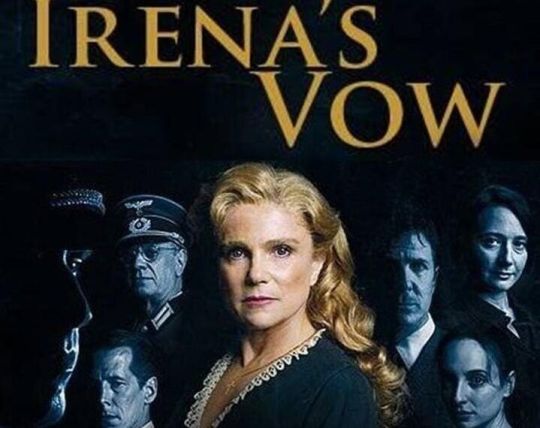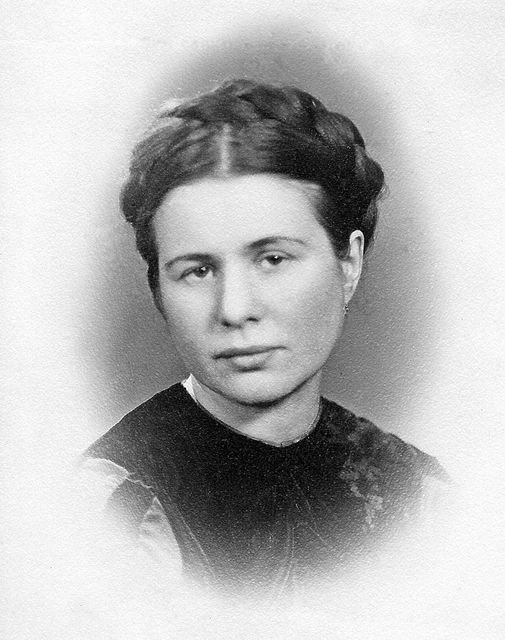#irena's vow
Text

SOPHIE NÉLISSE
Photographed by Chris Chapman at the Deadline Portrait Studio at TIFF 2023
#sophie nelisse#sophie nélisse#snelisseedit#sophienelisseedit#tiff#tiff 2023#useraashna#yellowjacketscastedit#yellowjackets#shauna shipman#yellowjacketscentral#yellowjacketssource#yellowjacketscast#irena's vow#toronto international film festival#deadline#womenedit#glamoroussource#actoredit#my edit
51 notes
·
View notes
Text
Irena's Vow
I have many heroes from WWII: Anne Frank, Irena Sendler, Stefania Podgorska, Oskar Schindler…just to name a few. Back in my teens or early twenties, I was reading “Sister Freaks,” by Rebecca St. James and stumbled across a woman of faith I never heard of before: Irene Gut Opdyke. I did further research on line and learned there was a book I just had to read! When I read her story, I wanted to cry for all she did and all she had been through, but she kept the faith and persevered.

Irene Gut Opdyke (born Irena Gut, 5 May 1922 – 17 May 2003) was a Polish nurse who gained international recognition for aiding Polish Jews persecuted by Nazi Germany during World War II. She was honored as a Righteous Among the Nations by Yad Vashem for risking her life to save twelve Jews.
That’s just a small bit from the Wikipedia article on her. You can find the complete version here. But don’t stop there, read her book: “In My Hands” to read her full story. You can buy it at Amazon.

“No matter how many Holocaust stories one has read, this one is a must, for its impact is so powerful.”–School Library Journal, starred
I did not ask myself, “Should I do this?” but “How will I do this?”
Through this intimate and compelling memoir, we are witness to the growth of a hero. Much like The Diary of Anne Frank, In My Hands has become a profound testament to individual courage.
You must understand that I did not become a resistance fighter, a smuggler of Jews, a defier of the SS and the Nazis, all at once.
When the war began, Irene Gut was just seventeen: a student nurse, a Polish patriot, a good Catholic girl. Forced to work in a German officers’ dining hall, she learns how to fight back.
One’s first steps are always small: I had begun by hiding food under a fence.
Irene eavesdropped on the German’s plans. She smuggled people out of the work camp. And she hid twelve Jews in the basement of a Nazi major’s home. To deliver her friends from evil, this young woman did whatever it took–even the impossible.

Her story was later told on Broadway, in a play called “Irena’s Vow.” Tovah Feldshuh portrayed Irena.

And now Irena’s story is told in a new movie by the same name. She is portrayed by Sophie Nélisse, who played Liesel Meminger in “The Book Thief” years ago. Check out this article about it!
“Irena’s Vow” was recently shown at TIFF – Toronto International Film Festival and you can vote for it here, to be picked up and shown at theaters! Please share this info, Irena’s story should continue to be told.



#irene gut opdyke#irena's vow#shoah#holocaust#wwii#period drama#women of faith#in my hands#christians#sophie nelisse#toronto film festival#poland#canada#tovah feldshuh
3 notes
·
View notes
Link
Irena's Vow, from Quiver Distribution, presents the story of Irena Gut Opdyke, a polish girl who through divine providence becomes a Nazi Major's assistant and befriends a dozen Jewish workers hiding them in his house for years
#Janet Walker#Haute-Lifestyle.com#The-Entertainment-Zone.com#movies to watch#Film review#irena's vow
1 note
·
View note
Text
Me seeing antisemetic comments on a trailer for an upcoming Holocaust movie

5 notes
·
View notes
Text







sophie nelisse for the premiere of the film Irena's Vow
166 notes
·
View notes
Video
youtube
IRENA'S VOW Official Trailer (2024) | HD
1 note
·
View note
Text
Irena’s Vow – The Trailer
I’m flipping out! Yesterday the official trailer for “Irena’s Vow” was released. For those who may not know what I’m talking about, here’s a post that I did last fall on this upcoming movie.
youtube
From what I could find out, it’s playing nationwide only on April 15th and 16th. Doesn’t it look fantastic? I just can’t wait!
#irena's vow#irene gut opdyke#irena gut opdyke#period drama#holocaust#shoah#wwii#poland#poland wwii#sophie nelisse#Youtube
0 notes
Photo

“I give my child in your care, raise my child as if it were yours.”
These words were written by the mother of a six year old Jewish girl Rami, who was smuggled out of the Jewish ghetto in Nazi occupied Warsaw, Poland, during the Second World War. Little Rami was placed into foster care with her mother’s Polish friends on the Aryan side of the city and, unlike her mother, ultimately survived the war. The person who was instrumental in making Rami’s survival possible was a woman named Irena Sendler, a social worker and Polish resistance operative who helped save 2,500 Jewish children like Rami during the Holocaust.
Beginnings
Irena was born in 1910 in Warsaw into a Roman Catholic family. Her father, Stanislaw Krzyzanowski was a physician and a researcher in infectious diseases. He was a humanitarian and an idealist, who helped found the Polish Socialist Party. He believed in democracy, equal rights, universal health care, and an end to child labor, and was even expelled from university in Poland for leading strikes and protests advocating for those goals.
When Irena was two, the family moved outside of Warsaw, to the village of Otwock, where Stanislaw set up his practice for the treatment of tuberculosis. The village was fifty percent Jewish, and that percentage included the poorest of residents. Unlike other doctors in the area, Stanislaw treated everyone, the rich and poor alike, despite the poor not being able to pay. “If someone else is drowning, you have to give a hand,” he would often say.
Irena grew up in close contact with the Jewish villagers. She played with their children, and by age six even spoke fluent Yiddish. At home Irena’s family life was warm and nurturing. Stanislaw loved his little girl very much and hugged and kissed her so often that Irena’s aunts would warn him not to spoil her. “We don’t know what her life will be like,” he’d reply. “Maybe my hugs will be her best memory.”
In 1916 an epidemic of typhoid fever swept through the village and Stanislaw chose to be on the front lines. Typhoid, a bacterial disease spread through food, water, and close contact with infected persons, was especially prevalent in poor communities with bad sanitation. Unlike other well off villagers who isolated themselves to avoid contact with the sick, Stanislaw continued caring for patients and later that year succumbed to the disease himself. He died shortly after.
But Stanislaw’s spirit lived on in his daughter, and as Irena matured she resembled her father more and more in her beliefs and actions. She majored in social welfare at the University of Warsaw, and interned in charitable welfare clinics where the poor could get a free education and legal assistance. She also started becoming more politically involved, joining the Polish Socialist Party that her father helped start and beginning to engage in protests and activism herself.
In 1935 anti-Semitic sentiment was on the rise in Poland, and at Polish universities an informal rule nicknamed the “bench ghetto” was introduced. “A rule was established at the University segregating the Catholics from the Jewish students,” Irena recalled. “The Catholics were to sit on the chairs to the right and Jews on the chairs to the left. I always sat with Jews and, therefore, I was beaten by anti-Semites together with Jewish students.”
Later, like her father, Irena was suspended from university for boycotting the labeling of campus identity cards with the word “Aryan” to differentiate non-Jewish students from Jewish ones. “I was taught since my earliest years that people are either good or bad. Their race, nationality, and religion do not matter — what matters is the person.”
The War
On September 1, 1939, after the signing of a non-aggression pact between themselves, Nazi Germany and the Soviet Union invaded Poland. The country was split in half, with the eastern side going to Soviet Union and the western to the Nazis. Warsaw fell to the Nazis.
Overnight Jews became second class citizens in Warsaw. They couldn’t hold state or government positions, couldn’t own businesses, they had to register ownership of property, and lost access to their bank accounts.
Barred from offering social services to the Jewish population officially, Irena with a few friends began to circumvent the rules by faking paperwork in order to do so. This was the beginning of Irena’s resistance operations. Soon Irena and her resistance cell were providing money, food, and clothing to thousands of Jews in Warsaw.
A year after the invasion, moving forward with their ultimate goal of Jewish genocide, the Nazis established a ghetto for Warsaw’s Jews. 350,000 Jews, nearly 30% of the city’s entire population, were imprisoned in a 1.3 square mile ghetto. The ghetto was surrounded by a ten foot tall brick wall crowned with ribbons of barbed wire.
Irena sprang into action looking for blank documents that could give Aryan identities to Jewish friends destined for the ghetto. And once the ghettoization of Jews was complete, she continued helping in any way she could.
Life in the ghetto was miserable. The Nazis rationed roughly 200 calories of food per person per day. Death by starvation was common. Sanitation was terrible with refuse and human corpses littering the streets. There was a shortage of soap, clothing, and the means to heat living spaces. Many people froze to death. Disease was everywhere, including tuberculosis, dysentery, spotted fever, and typhoid fever, the same disease that claimed Irena’s father’s life.
But Irena was undaunted. Because of her work with Warsaw’s Department of Health and Social Services, she received a pass from the Epidemic Control Department that allowed her official passage in and out of the ghetto. She immediately began making daily visits, sometimes multiple per day, to smuggle food, money, and doses of typhus vaccine into the ghetto. She would hide items in the false bottom of her bag, or in small pockets sewn into a padded bra. Many women had their bras altered with padding and pockets. “It was a joke in wartime Warsaw that women’s breasts had grown dramatically everywhere in the city since the arrival of the Germans.”
Children
Sometimes Irena would smuggle candy or dolls for the ghetto’s children. Children were particularly vulnerable in the ghetto, succumbing faster to malnutrition, freezing, and to more varied diseases than adults. Some families facing starvation relied on their children to obtain food by smuggling it from the Aryan side of the city. Other families sent children across the wall hoping they would fare better as orphans on the Aryan side than inside the ghetto. In the beginning of 1942, about 4,000 children lived on the streets of the Aryan side. 2,000 of them were Jewish.
That year, fearing Nazi soldiers’ contamination with typhus and other diseases from children living on the street, the chief of the Nazi police ordered for Warsaw’s social services to get all homeless children on the Aryan side of the city off the streets and into orphanages and other local institutions. The roundups yielded a number of Jewish children, many of whom Irena and her network helped disappear into private homes and orphanages under false Polish identities. But there were thirty two Jewish kids that could not be placed, and so, in order to save them from execution, Irena had to smuggle them back into the ghetto. Knowing what was awaiting them there, Irena was devastated at not having an alternative solution. She vowed to never again return a single child to the ghetto, and started, along with her associates, an operation to smuggle Jewish children out of the ghetto and to provide them with false Polish identities and caring homes on the Aryan side of the city.
The price for helping a Jewish child in wartime Warsaw was execution, and Irena and her core group of twenty to twenty five mostly women operatives, risked their lives daily to save each and every child. Children were smuggled out of the ghetto in a variety of ways. There were secret routes to the Aryan side of the city via sewers and underground corridors. Children were able to get across by sneaking through an old courthouse and a Catholic church that stood on the border of the ghetto. Irena’s epidemic control pass allowed her to officially bring a child out of the ghetto for treatment if they were ill with tuberculosis. Children with or without the disease were brought out this way. Some kids were hidden in ambulances, under floorboards or dirty rags, or in coffins along with dead bodies. The Nazis were terrified of disease and performed only cursory checks before waving ambulances through. The youngest, including babies, had to be sedated with tranquilizers and hidden in trucks in toolboxes, in sacks masquerading as laundry or potatoes, or under vegetable boxes. Some were left in briefcases on early morning streetcars that ran in and out of the ghetto and later picked up by a friend.
Once out of the ghetto, children had to take on new identities in order to integrate into Polish society. Sometimes documents were faked, other times legitimate blanks could be found. If children looked too Jewish, they had makeovers to make them look more Polish. Sometimes it was as easy as dying a child’s hair, other times Jewish boys had to become girls in order to prevent the Nazi authorities from checking for circumcisions.
Escaped children went on to live in homes of friends, in convents, in group homes, orphanages, or religious institutions, and Irena kept a list of each and every child placed with the hope of reuniting them with families after the war. She encoded and recorded only the most essential information such as names, addresses, and an account of any money that parents gave to help with caretaking on cigarette paper that nightly she prepared to throw out of her kitchen window in case the Gestapo, the Nazi secret police, ever came looking for her. Eventually, when it became too dangerous to keep the list at home, she buried it in glass bottles under an apple tree in a friend’s garden.
By this time Irena was already having nightmares on a regular basis. Not only did she worry about the children who would certainly be killed if they were ever discovered, she also worried about the families that were risking their lives to hide them. On top of everything, Irena was the sole person who knew the detailed histories of all the smuggled children. If anything were to happen to her, that information would be irretrievable.
Capture
In the fall of 1943, the Gestapo found and arrested a woman who ran a laundrette that the resistance used as a drop-off point for messages and packages. Charged with conspiring with the resistance, the woman was tortured and ultimately broke, giving up names of resistance operatives. One of those names was Irena Sendler’s. Days after, the Gestapo pounded on Irena’s door in the middle of the night. She was arrested, beaten, interrogated, and sent to Pawiak, a secret prison for intelligentsia and those politically involved. Most prisoners interned at Pawiak never left alive.
The Gestapo repeatedly tortured Irena for information, breaking her legs and feet, and permanently scarring her body. Despite the agony, Irena never said a word. She knew what divulging information would mean, a death sentence for thousands of children, friends and families. As luck would have it, the Gestapo thought they had captured only a fringe resistance operative, not the head of children’s division of the resistance movement, which meant Irena received no special treatment. Certainly if they realized who they were dealing with, they would have taken extra measures.
Irena lived at the prison for four months until her execution date was set for January 20, 1944. During the days, when she was not being tortured for information, Irena worked as a washerwoman cleaning soiled Nazi underwear. One day, when the Nazis found the laundry work not to their satisfaction, they lined up all the washerwomen against a wall and shot in the head every other one. Irena was one of the ones who survived.
On the morning of January 20th, a Nazi officer came to take Irena to the courtyard where she was to be shot. She was led down a corridor, but instead of being taken into the waiting room where she was to await her execution, the officer led her out of the prison and into the street. He released her and told her to run. As Irena later found out her friends in the resistance had bribed the Nazi with what today amounts to $100,000 to secure her escape.
End of the war and legacy
Once free, Irena went into hiding, and soon resumed her operations with the resistance. She continued rising in ranks until she was running meetings and setting agendas. In the summer of 1944, with the Soviets advancing, and the Nazis retreating, the Polish resistance army attempted to liberate Warsaw. They fought for two months, but were ultimately defeated by the Nazis. In response to the uprising, Heinrich Himmler, a most high ranking SS officer and the person responsible for forming and operating Nazi death camps, gave the order to kill all Polish residents of Warsaw and to level the entire city. “The city must completely disappear from the surface of the earth…,” he ordered. “No stone can remain standing. Every building must be razed to its foundation.” Ultimately more than 400,000 people were killed and eighty percent of Warsaw was destroyed by the retreating Nazi army. Irena miraculously survived the destruction.
After the Nazis were driven out of Warsaw, Irena and a friend went to dig up the list of children they had hidden in bottles. They searched and searched for the tree under which the list was buried, but found only rubble. Irena then set out, along with her friends, to recreate the list from memory. She continued working for decades helping reunite children with their families, and even adopted two orphaned Jewish girls herself.
Irena lived until 98, and passed away in Warsaw in 2008. Until the very end of her life she felt that she did not do enough to help children during the war.
Five years before her death Irena received Poland’s highest honour, the Order of the White Eagle, but she never enjoyed being called a hero.
“Let me stress most emphatically that we who were rescuing children are not some kind of heroes… Indeed, that term irritates me greatly.”
“Heroes do extraordinary things. What I did was not an extraordinary thing. It was normal.”
The children Irena saved during the war continued to call and visit her until the end of her life.
Historical Snapshots
108 notes
·
View notes
Text
fia and irena parallels to harrow and gideon from gideon the ninth 👀👀👀. something about one character vowing their blade to another, very powerfully magical character (and also they are gay). it’s about the inherent duty and care when it comes to protection.... so many thoughts. head full. niche as fuck post but that’s what i’m here for i think.
9 notes
·
View notes
Text
“Irena’s Vow”
Section: TIFF Centerpiece
Distributor: Quiver Distribution
“Irena’s Vow” is a Canadian and Polish Holocaust drama about a nurse forced to work under Nazi officers who manages to rescue over a dozen Jewish refugees. Sophie Nélisse stars.
1 note
·
View note
Text
“I don’t know.” America sits, hunched forward, his chin cupped in his hands. “Maybe I should back off. Maybe I am being sensitive. Maybe I shouldn’t protest over such ‘little’ things. Maybe they’re right, and I need to calm down and let some of these small things go.... focus on bigger fights?”
Germany stands then, to face America. “No. You know that is not true. I can tell you from experience that that is not true. If you stop fighting for the small things... Alfred, I watched a government strip people of thier rights starting with the smallest things, things people thought too small to fight back against, until atrocities were commonplace. I was cocky. I thought that such things could never happen, not in my country, and I was wrong. Whatever anyone can say about your passions, you need to know that there is no right too small to defend.”
Germany extends a hand. “After all, we promised, America, after that war.”
America smiles slightly, he takes Germany’s outstretched hand, and he pulls himself up. “Never again.”
#aph america#aph germany#I've been at rehersal for Irena's Vow#such an intense show#...#text post#ludwig beilschmidt#alfred f jones#hetalia#ww2#human rights#all the small things...#one shot#flash fiction
240 notes
·
View notes
Text
sophie at the montreal premiere of Irena's Vow
62 notes
·
View notes
Text
Blog 1 (For Theatre and Social Engagement).
1. Define in your own words the difference between 'aesthetic' theatre and 'social theatre'.
I feel that the term ‘aesthetic theatre’ applies the to features that are added in creating theatre and drama. This is where it works on believability, the norms and attitudes of the characters as well as the production’s values which tells the author or the practitioners’ views. Whereas ‘social theatre’ is about portraying a message, to address the audience on experiences based from what they have seen and researched to encourage ‘social change.’
2. Describe a piece of theatre/performance you have seen that ascribes to the notion of 'social' theatre.
When studying the performing arts in 6th form, we were required to watch Paper Birds, In a Thousand Pieces. This play stood out to me throughout studying, due to its content and its messages. As well as being ‘social theatre,’ the piece also used verbatim theatre to include the voices and viewpoints from the ordinary citizens that the audience would relate to. The play follows three girls coming into the UK in hopes for a better life, instead they are forced into the forced prostitution industry. As an audience, we would watch these girls getting raped, repeatedly which ultimately became a recurring motif throughout the piece. As a result, we felt very uncomfortable about this which is what Paper Birds intended. One section that stood out to me, is when one of the girls came out of character to explain how major this issue was. She did this by writing on a suitcase, writing down the number of rapes there were by days, weeks, months and years. The numbers were staggeringly high. I remember, when the play finished, there was no applause, just a moment of silence for the audience to reflect on what they have seen and how they can help.
3. What stood out to you in the Ted Talk? Why do you think theatre is a suitable medium for social change?
I admire Amy Fritsche’s passion towards the subject. I thought she provided well-argued points in favour of ‘social theatre’. She marked that debating these topics were not enough, as at the time the American government had denied entry to Syrian refugees. She compared these times using plays with similar themes in historical settings. The play she used was Dan Gordon’s Irena’s vow which was about hiding Jews from the Nazis through the Holocaust. Fritsche argued that we “have not learned to look out for our fellow human man.” I believe, as well as Fritsche, that theatre is a suitable medium for social change as it address the problem and directs it to an audience. It brings up the topics that we are too scared to talk about. As a result, it gives the audience power and responsibility. To use what they have learned to encourage social change.
Self Reflection: Why are you taking this module and what do you hope to gain and contribute?
Applied theatre is something I have always been interested and considered doing, but was never really able to do due to me juggling history and drama modules. I feel that theatre is more than just putting on a show. It is a form of art which should be used to convey messages and meanings to people. I hope to gain new perspectives and insights into ‘social theatre.’ As well as this, I hope to share my current perspective to help address the concerns I feel need to be addressed. Furthermore, I would also like to know how to turn these issues into theatre.
1 note
·
View note
